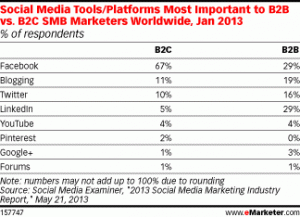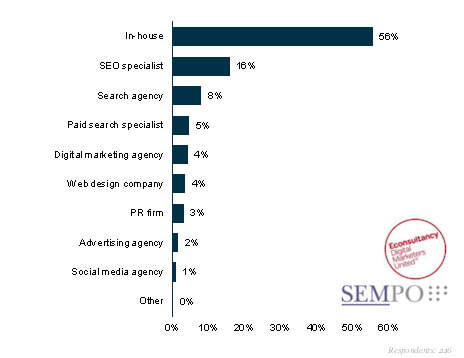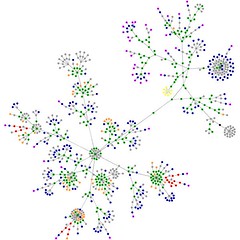Satya Nadella's first interview as CEO of Microsoft, at the company's campus in Redmond, Wash.
He joined Microsoft 22 years ago because he saw how clearly Microsoft empowers people to do magical things and ultimately make the world a better place. Many companies, he says, “aspire to change the world.
As he says...Mobile first...Cloud first.....
Learn more about Satya athttp://msft.it/msceo











 To generate leads and drive traffic to the website is the major SEO objective for companies investing in SEO. But the objective of driving traffic to website has gone down by 8% in 2012 since last year.
To generate leads and drive traffic to the website is the major SEO objective for companies investing in SEO. But the objective of driving traffic to website has gone down by 8% in 2012 since last year.

 Though the companies having a budget of $1 to $25000 has gone down by 7% in 2012 as compared to last year , the companies allocating a budget of $25000 to $75000 has gone up by 9% in 2012. There is a 4% increase in the no. of companies allocating a budget of more than $3 million too. This again is a positive trend that companies are willing to allocate higher budgets for SEO.
Though the companies having a budget of $1 to $25000 has gone down by 7% in 2012 as compared to last year , the companies allocating a budget of $25000 to $75000 has gone up by 9% in 2012. There is a 4% increase in the no. of companies allocating a budget of more than $3 million too. This again is a positive trend that companies are willing to allocate higher budgets for SEO.
 Glad to see that there are more companies willing to hire SEO specialists rather than SEO agencies. This again proves that SEO is a specialized service which needs to be implemented by individuals or small close knit and like minded teams for better results.
Glad to see that there are more companies willing to hire SEO specialists rather than SEO agencies. This again proves that SEO is a specialized service which needs to be implemented by individuals or small close knit and like minded teams for better results.
 Measuring the ROI from SEO seems to be still at the helm for the challenges faced for managing SEO. This problem will be automatically solved when the metrics to measure SEO is decided upon by the company. This will be a continuing trend though, because the total ROI from SEO can never be measured as the ROI from SEO is an ongoing thing. This is because the brand and reputation created by SEO makes the company accrue returns in future. Many times the targeted traffic which visits the site as a result of SEO services may not take any immediate decision for buying or contacting the company but may delay the decision for various reasons.
Measuring the ROI from SEO seems to be still at the helm for the challenges faced for managing SEO. This problem will be automatically solved when the metrics to measure SEO is decided upon by the company. This will be a continuing trend though, because the total ROI from SEO can never be measured as the ROI from SEO is an ongoing thing. This is because the brand and reputation created by SEO makes the company accrue returns in future. Many times the targeted traffic which visits the site as a result of SEO services may not take any immediate decision for buying or contacting the company but may delay the decision for various reasons.








